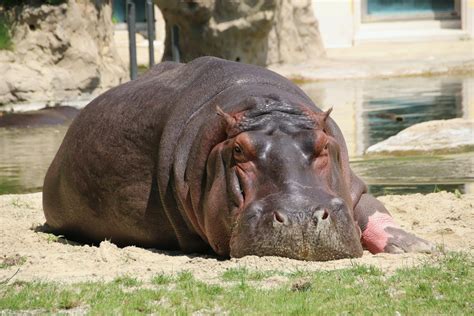Hippopotamus, as one of the most representative animals in African rivers and lakes, are impressive for their huge bodies and powerful strength. They are not only the second largest mammals on land, but also occupy a very special position in nature. Today, we will take you into the world of these amazing creatures through the lens of a documentary.
Hippopotamus are huge in size, with adult hippos weighing up to 5,000 kilograms and more than 4 meters in length. Although they look bulky, they are extremely adapted to the aquatic environment and often spend most of their time in the water to maintain body temperature and protect their skin from direct sunlight. They have strong swimming ability and can move flexibly in the water. Hippos are also very social. They usually form groups in waters and have complex social behaviors.
In addition to their important position in nature, hippos also have a place in art and culture. Especially in ancient Egyptian civilization, hippos were often used as symbols of power and abundance. The Bronze Hippo statue is a masterpiece of ancient art. These bronze statues usually show the majestic posture of hippos, and the exquisite craftsmanship is amazing. Whether in ancient temples or modern museums, bronze hippopotamus statues have become popular objects of visit for art lovers and tourists.
Through the documentary lens, we can not only see the real life of hippos, but also appreciate their symbolic meaning in different cultures. Behind each Bronze Hippo statue is the awe and worship of these huge creatures by human beings, which have become an important bridge connecting nature and culture.
Hippos are a miracle in nature and an indispensable part of the art world. Understanding their living habits will not only help us better protect these magnificent animals, but also let us understand their profound influence in human history and culture from a deeper level.




